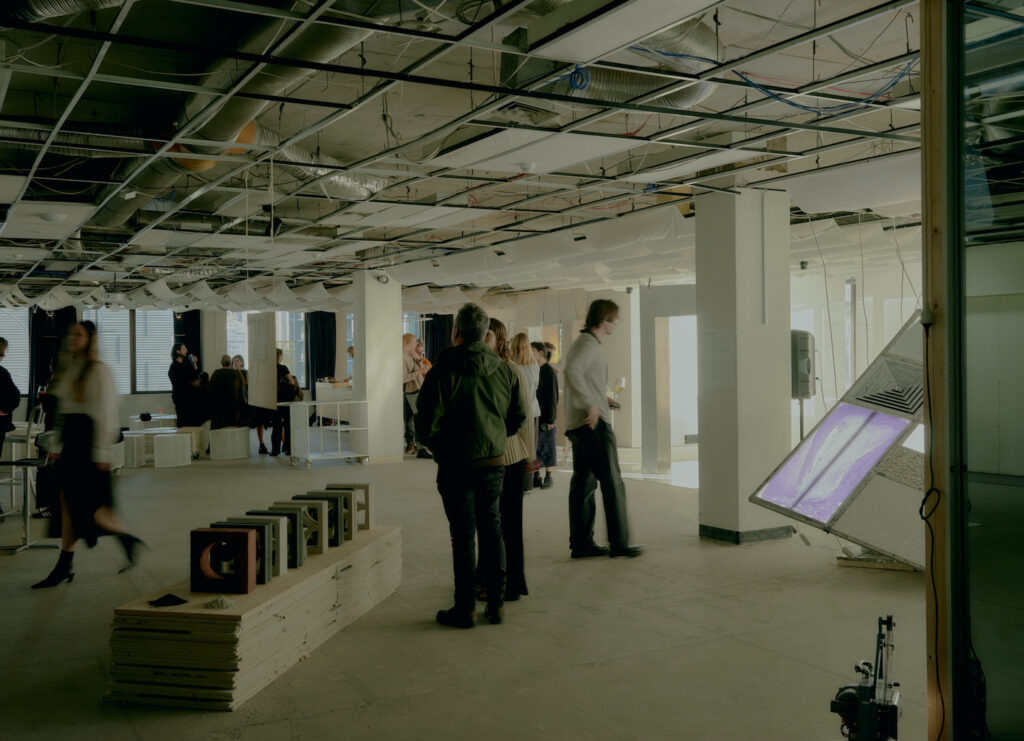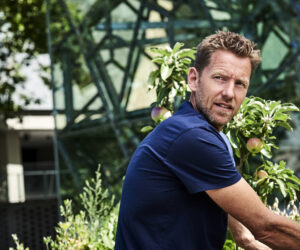‘Putting back better’— Circularity and regeneration, not sustainability
Ahead of an upcoming Melbourne Design Week panel discussion, Genevieve Brannigan sat down with Sally Evans, Director of Graphic Design and Product Development at Nexus Designs, to interrogate the role of bio-fabrication in design practice to create a better future for all.
1. In what ways do you think these products and technologies could help contribute to a circular economy and net zero goals? Why is this important?
I want to answer this by quoting Caroline Till from the UK based research and innovation studio Franklin Till whose work I admire. Sustainability has been the focus for the last decade, and a lot of companies and industries are only now taking it seriously, but Caroline has described it as, essentially, maintaining what we already have and only aspiring to the status quo. What she is telling her clients is that we can’t simply aim for sustainability— we need to encourage more proactive concepts of circularity, leaving no trace, and regenerative, putting back better.
Bio-fabrication is a clear path towards circularity and regeneration. The natural materials people are experimenting with are innately circular, they come from the planet and can one day return to it if we design with that intent right from the start. Hopefully, by having these kinds of conversations and developing these new materials, we can work towards making things better for the future.
2. How are advancements in bio-fabrication technology influencing your approach to product design?
At the moment, they’re not— but it is very obvious that they will be soon— it’s the tip of the iceberg. There are a lot of people putting a lot of energy, passion and time into this area of material technology. The more I read, the more I talk with clients, the more it’s piquing my interest. It’s no magic wand, it won’t solve all the problems our environment is facing, but it has the potential to be a big part of the solution.
We almost have to be interested in this, as an industry and as a country. Australia is far behind places like the UK and Europe— maybe seven or eight years— so it’s an area of experimentation that we need to focus on if we are to realise that huge potential.
3. Where are you seeing this needed experimentation occurring? How can we facilitate it further?
As part of Melbourne Design Week, we’ve supported Dani Storm and her team at the Design Futures Lab with an exhibition at Hanover House; where high school students have experimented with spent coffee grounds as a circular design material. Unlike industry whose minds we are working to change, they’re so fresh, they’re open to anything that’s new, because they don’t even realise that it is new.
In the UK and the Netherlands, there are a few universities that have implemented new design disciplines focused solely on material futures— on material innovation, allowing students to start from scratch, from a place of creativity and pure potential. We’re scratching the surface of this here in Australia, the University of Technology Sydney’s Material Ecologies Design Lab is doing some interesting work in the space, but it’s exactly the kind of attitude and work I would love to be seeing more of.
4. How can designers address concerns around scalability and cost-effectiveness when considering bio-fabrication?
At this point, that’s not a conversation I want us as an industry to even be having yet. Why create those boundaries? We’re not at boundaries yet— we could lose that creative exploration. And we need to do more exploration before we pull it back in and define it within this rules system of cost and scalability— let’s find out what’s possible before we look at what isn’t.
Interestingly, that was one of my own learnings from working with the Design Futures Lab. We came in at the first iteration of the material almost like a client, asking questions from a product and design perspective, “Can we bend it? Can we vacuum form it? Can we laser cut it? How thin can you make it?”
Nearly all the things we tried to do didn’t work. The material would invariably resort back to some original behaviour – it would buckle, curl, grow mould or become brittle, so we had to let it go, accept its limitations and let the qualities of the material begin to inform the function, and we began to see results.
5. What trends do you anticipate shaping the future of bio-fabrication and bio-materials, and how are you preparing to adapt your own process accordingly?
Trend almost feels like too small word. We are facing so many issues as a sector in grappling with climate change, its effects now and in the future, it’s bigger than trends— we need products like this, we need new material solutions, because we’ve actually not got a choice.
If manufacturers aren’t investing in innovation and rigorous change, looking to improve or reinvent their product, their service, to a circular or regenerative model, then the future is not a sustainable one. When we see big brands like Adidas for example investing in this conversation, consumers will expect it from the majority. There’s an expectation that’s growing and a subsequent responsibility that is part of that expectation that will only grow exponentially. And there’s a very real, very practical reason too, as we see our planet continuing to heat and our climate continuing to change.
6. So what’s next?
To me, it all comes back to innovation, science and design have creativity in common and encouraging conversation, collaboration and experimentation across disciplines is the first step in developing a pipeline of innovation that will enable a shift in industry. We want to open conversations with our clients and within the industry about these product innovations, whether it’s bio fabrication or other material concepts this thinking— shifting away from solely sustainability and to circularity and regeneration— and it’s positive! It’s optimistic. People recognise this need and I think in a lot of spaces are ready to be part of the solution.
If we can get more involved in one another’s work as an industry, more involved in exploratory projects like the Design Futures Lab, we will have more ways to start more conversations and discover more solutions.
Doing it on our own limits our reach, everyone is stuck in their own little bubbles can be bogged down by their own infrastructure with existing boundaries and expectations— it never changes anything. Injecting new inspiration, new insights into one another’s work, both positive and negative, will only broaden our reach and grow our understanding as individuals and as an industry. Then, when we’re in the rooms with the decision makers, we can be confident in these recommendations, open their minds, and encourage everyone to think about their own material futures.
Sally Evans leads the creative and strategic direction of Visual Communication and Product Development at Nexus Designs, a multi-disciplinary studio with a collaborative approach. A creative and analytical professional, Sally has extensive experience across typologies, and a particular interest in the topic of regenerative product development and innovation.
Don’t miss the full panel discussion ‘SCIENCE X DESIGN | THE FUTURE IS BIOFABRICATION’ presented by Atelier and Collectivity Talks at Melbourne Design Week 2024.
Atelier and Collectivity Talks is proudly presented as part of Material Matters 02, the second edition of a sustainable retail-focussed exhibition set inside the immersive and experiential space Atelier at BETA by STH BNK’s Hanover House. Situated in the heart of a dynamic international arts precinct, three floors of the soon-to-be-demolished 1970s office building have been converted by Sibling Architecture into a series of creative experimental spaces exploring the future of sustainable retail, as part of a creative program initiated by Beulah.
Thursday 30 May
6.15pm to 7.15pm (doors 5.30pm)
Tickets available here
Emerging bio-based and upcycled materials for every-day use
Friday 31 May
6.15pm to 7.15pm (doors 5.30pm)
Tickets available here



